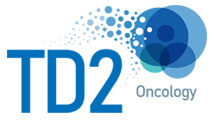Antibody drug conjugates (ADCs) represent a significant advancement in cancer therapy, combining monoclonal antibodies with potent chemotherapeutic agents to precisely target and eliminate cancer cells. As the field progresses, several key trends are shaping the future of ADC development.
In Vitro Assays
Rigorous evaluation of ADCs is essential to enhance their efficacy and safety. This involves a detailed assessment of factors such as stability, specificity, and pharmacokinetics. In vitro screening techniques are crucial in this evaluation process. High-throughput screening methods enable rapid identification of promising ADC candidates. Specific assays used in ADC evaluation include:
- Cytotoxicity Assays: These measure the ability of ADCs to kill cancer cells. Common assays include the MTT assay, lactate dehydrogenase (LDH) release assay, and flow cytometry-based apoptosis assays.
- Binding Assays: Surface plasmon resonance (SPR) and enzyme-linked immunosorbent assays (ELISA) are used to evaluate the binding affinity and specificity of the ADCs to their target antigens.
- Internalization Assays: These assess the ability of ADCs to be internalized by target cells, using techniques such as fluorescence microscopy and flow cytometry.
- Drug Release Assays: These assays determine the efficiency of drug release from the ADCs within the target cells, often using mass spectrometry and liquid chromatography.
In Vivo Testing
In vivo testing remains a cornerstone of ADC development. Animal models are indispensable for evaluating the safety and efficacy of ADCs prior to clinical trials. Researchers are refining in vivo protocols to obtain more predictive data. Key aspects of in vivo testing include:
- Pharmacokinetics and Biodistribution Studies: These studies track the distribution and concentration of ADCs in various tissues over time, using imaging techniques such as PET/CT and MRI, along with bioanalytical methods like LC-MS/MS.
- Efficacy Studies: Animal models, including cell line derived xenograft (CDX) models and patient-derived xenograft (PDX) models, are used to assess the therapeutic efficacy of ADCs. Tumor growth inhibition (TGI) and survival studies are standard methods.
- Toxicity Studies: These evaluate the potential adverse effects of ADCs, focusing on off-target toxicity and safety margins. Hematology, clinical chemistry, and histopathological analyses are commonly employed.
Combination Therapy
A significant trend in ADC development is the exploration of combination therapies. Combining ADCs with other cancer treatments, such as immunotherapy, targeted therapies, or traditional chemotherapy, can enhance therapeutic outcomes. Specific examples of combination therapy research include:
- ADCs and Immune Checkpoint Inhibitors: Researchers are studying the combination of ADCs with immune checkpoint inhibitors, such as pembrolizumab (anti-PD-1) or ipilimumab (anti-CTLA-4). These combinations can potentially enhance anti-tumor immune responses and improve overall efficacy.
- ADCs and Small Molecule Inhibitors: Combining ADCs with targeted small molecule inhibitors, like tyrosine kinase inhibitors (TKIs), can disrupt multiple cancer growth pathways simultaneously, leading to more effective tumor control.
- ADCs and Radiation Therapy: There is ongoing research into combining ADCs with radiation therapy to exploit the localized damage caused by radiation and enhance the delivery of the cytotoxic payload to cancer cells.
Advancements in Technology
Technological advancements are propelling ADC research forward. Innovations in linker technology, bioconjugation techniques, and payload development are significantly enhancing the stability, efficacy, and safety of ADCs. Specific examples of these advancements include:
- Linker Technology: Advances in linker chemistry are critical for improving the stability and controlled release of the cytotoxic drug. For instance, the development of cleavable linkers that are stable in the bloodstream but release the drug in the tumor microenvironment ensures targeted delivery.
- Site-Specific Conjugation: New bioconjugation techniques, such as site-specific conjugation, allow for precise attachment of the drug to the antibody. This reduces heterogeneity and improves the pharmacokinetic profile of ADCs. Techniques like enzymatic conjugation and the use of engineered cysteine residues are examples of this advancement.
- Novel Payloads: The development of novel cytotoxic agents with different mechanisms of action expands the therapeutic potential of ADCs. For example, pyrrolobenzodiazepines (PBDs) and duocarmycins are potent DNA-damaging agents that have shown promise in enhancing the efficacy of ADCs.
- Next-Generation Antibodies: Engineering next-generation antibodies, such as bispecific antibodies, can enhance the targeting capabilities of ADCs. These antibodies can bind to two different antigens, increasing the specificity and reducing off-target effects.
In conclusion, the field of ADC drug development is rapidly advancing, driven by rigorous evaluation methods, innovative research, and technological advancements. By focusing on these top trends, researchers are making significant strides toward developing next-generation ADC therapies with the potential to revolutionize cancer treatment.



